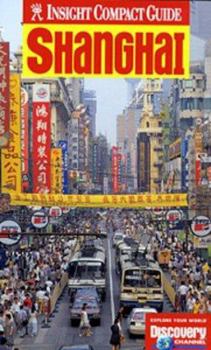Shanghai
No Synopsis Available.
Format:Paperback
Language:English
ISBN:0887298192
ISBN13:9780887298196
Release Date:January 2000
Publisher:Langenscheidt Publishers
Length:128 Pages
Weight:1.00 lbs.
Dimensions:0.2" x 4.6" x 7.6"
Related Subjects
TravelCustomer Reviews
5 ratings
Valuable Travel Asset
Published by Thriftbooks.com User , 21 years ago
Published in conjunction with The Discovery Channel, it's information you can trust to be accurate. The history lessons and overview of the modern-day city itself -- it's people, economy, language, currency, culture, artisans and performing arts, markets, and hidden gemstones off the beaten path -- make this guide truly special. However, the glossy pages that are virtually indestructible, up-to-date maps, compact size and plenty of photos are what will make this guide your most valuable travel asset while in Shanghai!
Surprisingly accurate, informative, non-patronizing
Published by Thriftbooks.com User , 21 years ago
I live in Shanghai, and usually write guidebooks, not read them. When I do, it's usually to wince at all the things the writers who came here for a mere month or so of research got wrong. Even those without glaring errors tend to be off by angle, such as raving about the rather dull Yu Gardens and failing to notice the incredible living history museum, Shanghai's Old City (aka Chinatown), that it is situated in. They only offer the stupidly obvious destinations, like the Bund, Huaihai Lu, and Nanjing Lu, to the neglect of fascinating, cultural history spots like Sichuan Lu and the Jewish Ghetto. I was handed the compact guide as a reference for a project I was working on, and it pleasantly surprised me. Amazingly, I found nothing to criticize, nothing to wince at. I was impressed to discover in it city trivia that even I consider obscure, like the history of the Broadway Mansions as the old Foreign Correspondents Club.But nicest of all is its refusal to patronize. Many guidebooks take the attitude, "You're a stupid Western tourist,doesn't speak any Chinese, so here's what to do!" So, if you pick them up having read anything - anything! - about Shanghai previously, you're likely to feel put off. The Compact Guide refreshingly presents the facts without too much condescending background but also without playing insider baseball. It's very accessible.Only two quibbles: the maps are confusing, have a number of typos, don't have characters along with the pinyin, and are so small, listing so few streets, to be useless unless you already know where you are/where you're going (and then, why do you need a map?). Also, Shanghai changes so quickly that, being written three years ago, it is rather woefully out of date. Use its listings with caution.
Better than Fodor's Pocket Shanghai
Published by Thriftbooks.com User , 22 years ago
I bought this book and also Fodor's Pocket Shanghai. This book has better print/paper quality. Has more maps. For each attraction, there is a color photo so that you can decide if you would like to go there. The photo also helps to identify the attraction if you do decide to go there.The Fodor's book has no photos, looks [inexpensive], but is actually [$] more.
The Best Compact Guide on Shanghai
Published by Thriftbooks.com User , 22 years ago
I was plesantly surprised by this compact book. I didn't know that it was associated with the Discovery Channel. The book has outstanding print/paper quality. It has plenty of maps and lots of pictures. This helps me to find the place. I can also decide, from the pictures, if I would be interested in visiting such an attraction.The best surprise is that this book is actually listed [$$$] less than the Fodor's compact book.
Excellent compact guide
Published by Thriftbooks.com User , 23 years ago
I took this and Fodor's Citypack Shanghai (Citypack) guide for a week in Shanghai in 12/00. I found this guide far better than the Fodor guide. I found it to be an excellent general guide, if you want a compact, concise guide. The excursions were pretty good as well.





